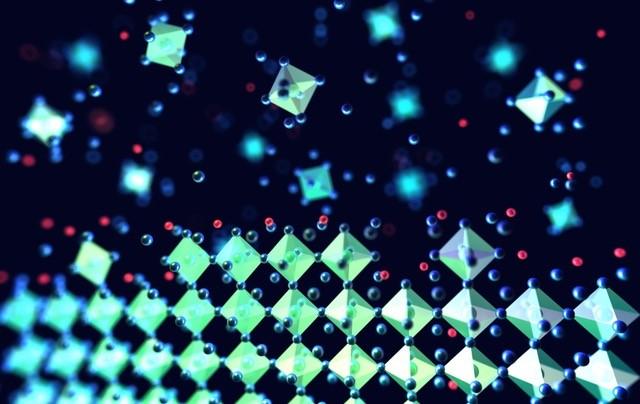Hybrid organic perovskites are a fascinating class of materials with excellent electronic properties that can be made cheaply in large quantities and tuned for specific applications, and are very popular candidates for solar cells and light emitting devices. However, their long-term stability is undermined by degradation processes, including migration of some elemental species within the structure. In this work we show how potassium can be used to passivate defects and reduce the ionic migration through the film, enhancing performance and limiting film degradation. In MSM we carried out TEM studies to understand the role of the dopants, their position in the films and the chemical environment surrounding them. Particularly, the use of multivariate analysis allowed the distinction of segregated phases containing a mixture of K and Br.
Figure: Atomic scale view of perovskite crystal formation. Credit: Matt Klug.
M. Abdi-Jalebi, Z. Andaji-Garmaroudi, S. Cacovich, C. Stavrakas, B. Philippe, J. M. Richter, M. Alsari, E. P. Booker, E. M. Hutter, A. J. Pearson, S. Lilliu, T. J. Savenije, H. Rensmo, G. Divitini, C. Ducati, R. H. Friend and S. D. Stranks, "Maximizing and stabilizing luminescence from halide perovskites with potassium passivation", Nature 555 (2018) 497–501

